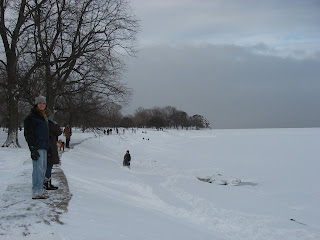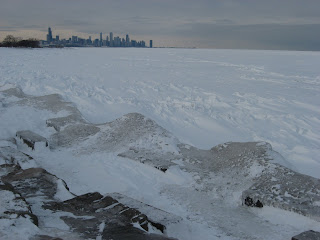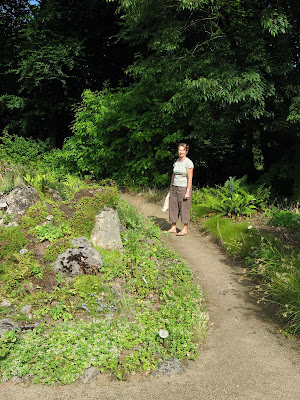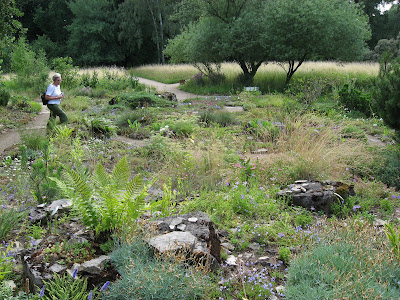Monday, April 9, 2012
I need things in graph form to understand them
Tuesday, December 6, 2011
Weak sauce, or why there really won't be blueberries in Idaho
These don't sound as sexy as Weak's solutions, but reducing the yield gap and reducing food waste should be local efforts. How could you do that top down?
GG&S:
There are also a number of diets that can be produced locally that are full nutrition. "Enjoy scurvy" seems a little extreme when native diets - corn, beans, squash - and diets in similar climes in Europe - potatoes, cabbage, dairy products - provided complete nutrition. (more examples in Jared Diamond's Guns, Germs, and Steel)
Additionally, Americans spend less than 10% of their current earnings on food. That's in contrast to other nations and other time periods, where this percentage was more like 40%. While the poor have difficulties obtaining nutritious food, this often seems to be due to both neighborhood distributional problems (food deserts) and priorities in subsidies for corn and soy over vegetables in the American budget. (I forget where I read all this, but some of it's probably in Guns Germs and Steel). For the many, higher prices for food would be possible, though unpleasant, to fit into budgets with, of course, a lower quality of life. Not fun but possible!
CB:
Not all food should be sourced locally. Hardy foods like cranberries (yay Idahoans!) and dried fruit, coffee, and spices have always been shipped from afar. But moving vast sources of water around in the form of delicate tomatoes and pears from dry, irrigated regions such as California is just destroying that farmland in the long term so that you can have your pears in the short term. More economic projections need to build in long term environmental damage as a cost, not just short term gains from ten cent bananas.
Why is local farming wasteful? Building houses and giant useless lawns on what used to be farmland is wasteful. If people turn some of that useless lawn back in to crop plants, that is extremely useful. Why not grow a victory garden? If we did it (and by "it" I mean produced 40% of our fruits and vegetables locally, in WWII) once, we can do it again!!
Essentially, we're in for a shitty ride in the next 40 years. Local food production could ease the sting of massive crop failures due to climate instability or matched virulent diseases to US-wide monocultures. Local efforts could prevent food waste. Local food production could ease the 20% of American emissions that go into moving our food from place to place, which could ease the price of such foods that is correlated with oil costs.
I think Weakonomics' problem is that it assumes that we're only going to try to grow food locally to solve our future food problem. No, it's not the only solution. But it's got to be part of the solution or the food distribution problem will only get worse. Then there really won't be blueberries in Idaho, because they won't grow them there and won't be able to afford to ship them from anywhere else.
Friday, February 4, 2011
Chicago Blizzard! (Slash Snowpocalypse, slash Snowmaggedon)


There were a dozen people out on my block shoveling once the storm finally cleared up. Notably, this guy in a t-shirt:

(click on the pictures if you want to see them larger)
They'd clearly been working a while, but weren't totally done with the job:


 In the parking lot across the street from my apartment, people were putting the pile of snow they'd managed to plow to good use sledding.
In the parking lot across the street from my apartment, people were putting the pile of snow they'd managed to plow to good use sledding.

Later my friends Colin and Laura and I decided to walk out to Lake Michigan to see what had happened out there.

The wind had definitely been fiercer near the lake.

Kids had been making very good use of the snow dunes to make snow caves.

Walking on the snow dunes was probably the most fun part of the whole walk.

To get out to the lake we could actually cross Lake Shore Drive at any point. No crossing under in the tunnel to avoid the 45-60mph traffic for us! It was very post-apocalyptic, with all the pedestrians walking on the empty road.
 Out at the lake. What is usually large blocks of stone 3 ft high terraced down to the lake is now just a snowbank.
Out at the lake. What is usually large blocks of stone 3 ft high terraced down to the lake is now just a snowbank. Frozen waves on the 57th street beach.
Frozen waves on the 57th street beach.
Me out at the lake. Aw. The snow boots are coming in handy.

Laura and Colin out at the lake. Aw again.

Frozen waves on the lake shore, frozen waves covered in snow out on the lake, the city (frozen) in the background.

Walking back home. Yep, lots of snow.

Friday, August 8, 2008
URGENT MEMO
Friday, August 1, 2008
Brügge
Our first (real) view of Brugge.

The group (sans me) by the canals. Will, Akash, Rehan, John.

Wide-angle seeming view of the canals.

In a restaurant’s upstairs window, just outside of an (austere, pretty) convent. I really like the expression on the nun’s face.

Yep, Brugge was touristy. And yet, who wouldn’t want boat rides through canals and carriage rides? I suppose.

More canal pictures. Yep, I liked the canals.

Tourists on the canals. Throughout the day, we got sporadic, intense rainstorms, which would start without warning and last anywhere from 5 – 45 minutes, after which the sun would come out again almost instantly. Quite bizarre. Anyways, I was pretty amused by all of the canal tourists with their matching umbrellas. Either they were tour groups or the boats came armed with their own umbrellas for this very reason.

Pretty canals. Maroon umbrellas this time.

Trolling the streets of Brugge, with my trolls. Just kidding.

In the city square.

We had fries. The braver ones of us had fries with mayonnaise, a Belgian specialty.

Mmm, fries and dip, a balanced diet. Don’t worry, we had chocolate too. And… beer.

We went and saw the ruins of an old church, which are located underneath a ritzy hotel today. Will had acquired an insiders knowledge of Brugge before we went there (probably to get his money’s worth :-P); this was the only reason we knew that the ruins were there, or accessible in such a swanky hotel. Anyways, they had this painting they had unearthed that I quite liked.

Rehan: “Do something crazy!”

The canals again.

We found a cannon! (again, inside know-how). Noone knows how this cannon got upended and embedded in the sidewalk; the challenge is to spot it on this corner (apparently hardly anyone notices it). John and I saw it right away, and we had a fun 10 minutes watching the others try and spot it. “Warmer! No, colder. Colder.”

We visited the oldest bar in Brugge (est. 1515). There I had a Leffe beer (I asked the bartender what she recommended), which was pretty much the most delicious thing ever, and in fact blew most of my expectations about Belgian beer right out of the water. They still have an old stove and kettle in the bar, and lots of paintings of famous people (think: royalty and the like) who have visited. Fun.

Inside a candy shop that Will had heard about run by a 80-something year old woman. Discipline + Respect!!!

Would a tour of any Belgium town be replete without a windmill picture? I think not.

Frankfurt (am Main)
Here’s the Römer Square in Frankfurt; I actually have a (better) duplicate of this image in the form of a free poster I got while in the square.

The other side of the Römer Square. Apparently, the first set of buildings are all the originals, repaired former homes to some wealthy people in Frankfurt. These buildings are all new since the war, but built in the old style (so the square would look authentic? I guess).

In the square, looking for soveniers. I’m guessing you’re telling me not to take a picture of you, aye?

The Main river, after which Frankfurt am Main takes its name. There’s another, significantly less famous Frankfurt on the banks of some other river, but it seems both need to be distinguished.

By the Main River. Aww!

What’s that?

A bird, a plane. A flying dinghy?

The M: “You just took that photo of us huffing up the stairs to blackmail us with later.” Mission accomplished!!

Frankfurt am Main, as seen from a very cool architectural museum we visited. This was not the only reason it was cool.

Kayaks and cathedrals.

And a barge. I couldn’t decide which picture I liked better, so you get both.

A paper flower? That’s what it seemed like. This was in the botanical gardens in the park we visited. There were lots of cool plants, but unfortunately we got to the gardens only half an hour before they closed, so we didn’t get to see too much.

In the botanical gardens.

More pictures from the gardens. This patch resembled the plants you’d see in Texas, with its dry, rocky (or rock) soil. We all wondered how they got these plants to grow well in rainy Germany.

Foxgloves? Cool, anyways.

Space alien giraffe plant!! Truly bizarre.

Sitting in the gardens.

After everyone else left for Greece (lucky people) I ended up taking the slow inter-country (IC) train back to Jülich. This turned out to be a whole lot prettier than taking the express train (ICE) because for most of the trip back the train tracks ran along the Rhein River. Thus:

And:

This reminded me just a bit of the Marlborough Sounds, which is perhaps why I liked it so much.

Well, it was like the Marlborough Sounds, except for, you know, with castles.

Le sigh. Very cool!


